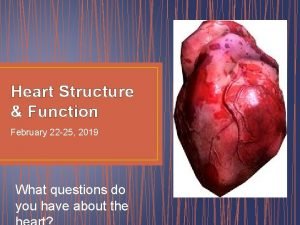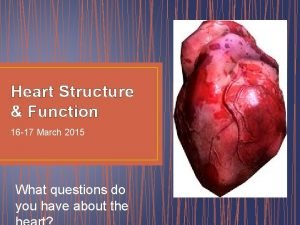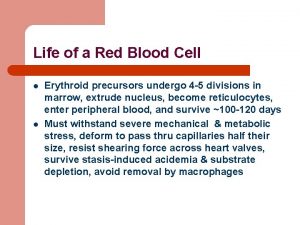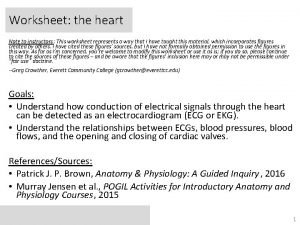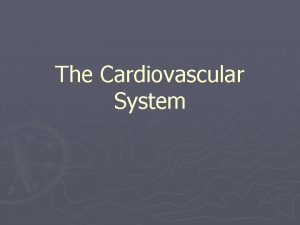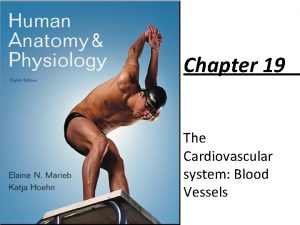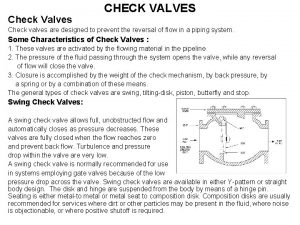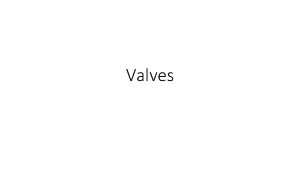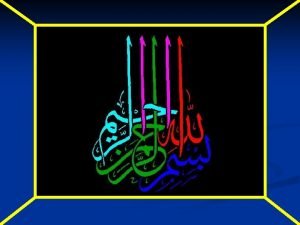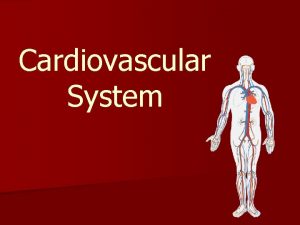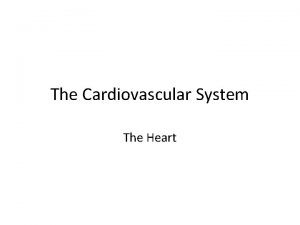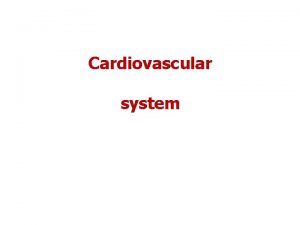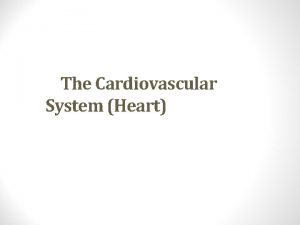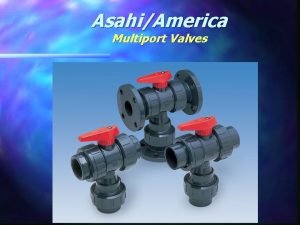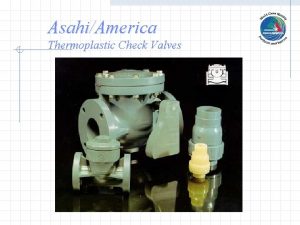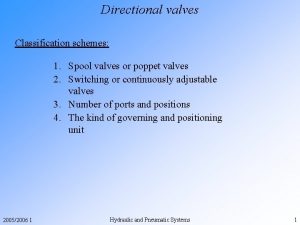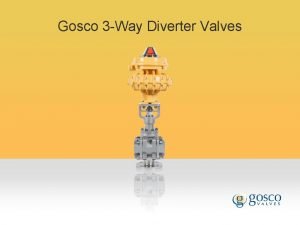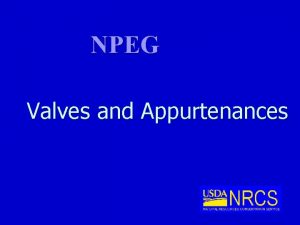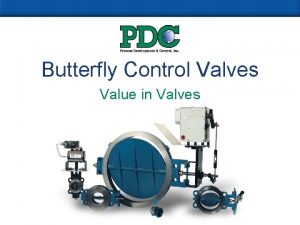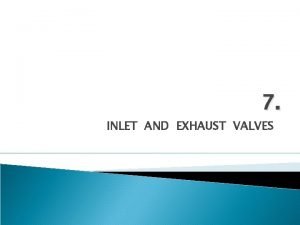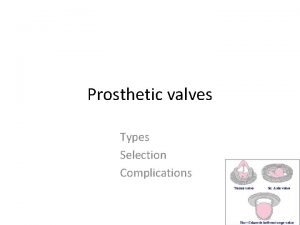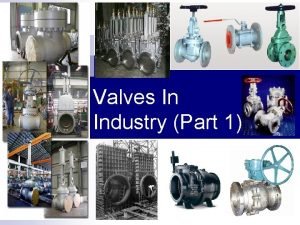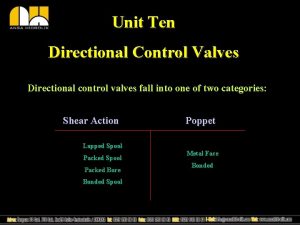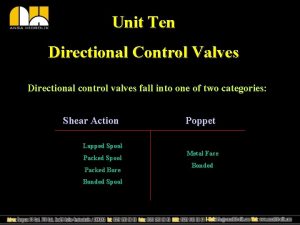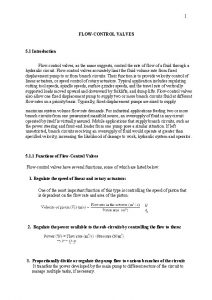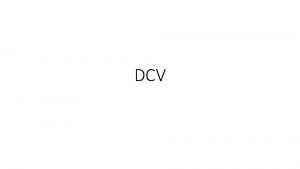Cardiovascular System The Human Heart Human heart valves

























- Slides: 25

Cardiovascular System The Human Heart

• Human heart valves are remarkable structures. These ________ membranes attached to the heart wall constantly _______ to _________ (causing the sound of a heartbeat). This flexing of the tissue occurs day after day, year after year. • In fact, the tissue withstands about _____ beats a year, or ___________________. Each beat is an amazing display of strength and flexibility.

Human Heart valves

• When the heart muscle _______ or beats (called _______), it pumps blood ____________. The heart contracts in two stages. • In the first stage, the _______ contract ___________, pumping blood to the _______ (through the ______ and _____ valves). • Then the ____________ to propel blood out of the heart (through the _________ valves).

• From the pulmonary valve the blood goes to the __________ then to the _____ where _______ occurs (________ circulation) • From the ______ the blood goes directly into the _______ to begin ___________ to the _____ of the body. • Then the heart muscle _____ (called diastole) before the next heartbeat. This allows blood to fill up the heart again

• The right and left sides of the heart have separate functions. • The ____ side of the heart collects _______ blood from the body and pumps it to the ____ where it picks up oxygen and releases carbon dioxide. • The _______ side of the heart then collects _______ blood from the lungs and pumps it to the body so that ______ throughout your body has the oxygen it needs to function properly. • The two sides of the heart are _____ by a very ________ called the ____, so that the O 2 blood and de-O 2 blood _______.

• The heart consists of four chambers, two ______ (_______ chambers) and two ______ (_____ chambers). • The atria are the _______ chambers of the heart, receiving blood flowing back to the heart. • The ventricles are the _______ chambers of the heart that pump the blood out of the heart. •

• Blood passes through a valve before leaving each chamber of the heart. • The valves prevent the _____________. • There are two _____ valves (atrioventricular) and 2 _________ valves • Valves are actually flaps (leaflets) that act as _____ inlets for blood coming ____ a ventricle and ______ outlets for blood ____ a ventricle. • Each of the 4 main valves has three flaps (leaflets), except the mitral (bicuspid) valve, which only has two flaps.

• The four heart valves include the following: • Tricuspid valve – (_____) located between the _______ atrium and the right ventricle. • Pulmonary valve – (_______ valve) located between the right ventricle and the _________. • Bicuspid (Mitral) valve – (____ valve) located between the _____ atrium and the left ventricle. • Aortic valve – (__________) located between the left ventricle and the aorta.

• The bicuspid/mitral valve and tricuspid valve control blood flow from the atria into the ventricles, this is blood flow ______ • • The aortic valve and pulmonary valve control blood flow ______ of the ventricles and _______ the aorta and pulmonary arteries, respectively. This is blood that flows ________ to the lungs and body systems

• Heart valves function this way. • As the heart muscle contracts and relaxes, the ______, letting blood flow into the ventricles and atria at _______ times. • The following is a step-by-step description of how the valves of the left ventricle function normally:

1. When the left ventricle _____, the __________ and the ______/mitral valve ______, to allow blood to flow from the left atrium into the left ventricle. 2. The left atrium ______, allowing even ______ to flow into the left ventricle. 3. When the left ______ contracts, the ____/mitral valve _____ and the _________, so blood flows into the aorta. Crazy cool huh? ? ?

• The normal heart sound is typically described as ”_____. " • The "lub" sound is usually ________ than the "dub", and it is associated with the ___________ at the beginning of systole. The sounds are also amplified by the chest, making them more audible. • The sounds of the heart are only from the ______, not opening. • The ”____" is the ______ heart sound. The ”____" sound is _____________ than the "lub" sound. It is associated with the ______________ (aortic and pulmonary). • The sound is shorter and louder because the ______ of the valves are _____ than the bicuspid and tricuspid valves.

Heart valve disease • When heart valves _____ open and close properly, the implications for the heart _______, possibly _______ the heart's _______ to pump blood adequately through the body. • Heart valves can malfunction in several ways, including the following: • .

• _______ – (also known as “prolapse”) , the valve does ___________, causing the blood to ________ instead of forward through the valve. • ______ - the valve opening is ________ or does not form properly, inhibiting the ability of the heart to pump blood properly. • _______- the valve opening ________, preventing blood from passing from an atria to a ventricle, or from a ventricle to the pulmonary artery or aorta. Blood must find an alternate route

• An atrioventricular septal defect (AVSD) is a heart _______ in which there are ________ of the right and left sides of the heart, and the _____ that control the flow of blood between these chambers may ________



• The ____________ of the heart is the _______ (SA) node which is located in the ________. • The SA node generates an __________ which then gets sent around the heart, stimulating the cardiac muscle to contract and ___________.


• An "artificial pacemaker" is a small, ________ device that helps the heart beat in a _______. Most are permanent (_______) and inserted surgically (superficially) _______, and others are temporary (external). They can replace a ______ natural pacemaker or __________. • A pacemaker uses batteries to ___________ to the heart to help it pump properly. An _______ is placed next to the heart wall and small electrical _____________ to the right atrium of the heart. • Most pacemakers are _____ pacemakers. They have a ________. It turns the signal _____ when the heartbeat is above a certain level. It turns the signal ______ when the heartbeat is _______.

• Arteries • The _____ (outer structure) of arteries contain _________________ that contract and relax under the instructions of the sympathetic nervous system. • See your coloring plate 103 for detailed illustration of the anatomy of each of the blood vessels. • Arterioles – _____ arteries • Arteries - ______ have valves (except for the semi -lunar valves of the pulmonary artery and the aorta).


• Veins • The walls (outer structure) of veins consist of _____ of tissues that are ___________ than the corresponding layers of arteries. • Veins - ______ throughout the main veins of the body. These are to ____ blood flowing in the ____________________, as this could return waste materials back to the tissues. • Venules – branches of _____ veins

Arteries Veins - carry blood ______ from the heart - carry blood _____ the heart - ______ blood to various parts of body - ____ blood from various parts of body - _____, elastic muscle that can handle - _______, elastic muscle layer with ________ of blood flowing semilunar valves preventing backflow through them of blood - ________ in body - ______ to the skin - arterial walls are _______ - veins have _______ walls - there are ________ - ____ present, especially in limbs - thickest layer is ________________ - diseases – artherogenesis, myocardial - diseases – deep vein thrombosis ischemia
 The function of the heart valves is to_____
The function of the heart valves is to_____ The function of the heart valves is to_____
The function of the heart valves is to_____ Hemolysis symptoms
Hemolysis symptoms Ekg
Ekg Heart parts
Heart parts Chapter 19 the cardiovascular system blood vessels
Chapter 19 the cardiovascular system blood vessels What makes up the circulatory system
What makes up the circulatory system Rat cardiovascular system simulation
Rat cardiovascular system simulation Cardiovascular/lymphatic system it's totally tubular
Cardiovascular/lymphatic system it's totally tubular Coronary circulation of heart
Coronary circulation of heart Chapter 5 the cardiovascular system
Chapter 5 the cardiovascular system Figure 11-7 veins labeled
Figure 11-7 veins labeled Chapter 11 the cardiovascular system figure 11-3
Chapter 11 the cardiovascular system figure 11-3 Lesson 11 cardiovascular system
Lesson 11 cardiovascular system Lesson 11 cardiovascular system
Lesson 11 cardiovascular system Agranulocytes
Agranulocytes Hypertensive atherosclerotic cardiovascular disease
Hypertensive atherosclerotic cardiovascular disease Introduction to cardiovascular system
Introduction to cardiovascular system Ptca
Ptca Anatomy and physiology unit 7 cardiovascular system
Anatomy and physiology unit 7 cardiovascular system Cardiovascular system diseases and disorders chapter 8
Cardiovascular system diseases and disorders chapter 8 Chapter 13 cardiovascular system
Chapter 13 cardiovascular system Chapter 11 the cardiovascular system figure 11-2
Chapter 11 the cardiovascular system figure 11-2 The cardiovascular system includes the
The cardiovascular system includes the Blood vesel
Blood vesel Venule
Venule
